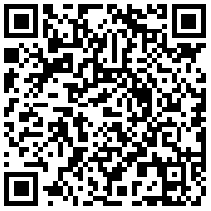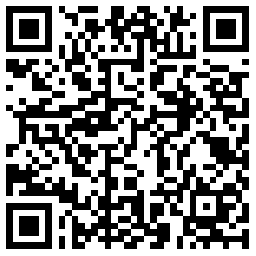-
摘要:目的 探讨经会阴模板引导前列腺饱和穿刺活检(transperineal template-guided prostate saturation biopsy,TTPSB)的安全性和可行性。方法 回顾性分析苏北人民医院泌尿外科2017年3月至2018年5月收治的疑似前列腺癌行前列腺穿刺活检患者的临床资料。根据前列腺形态及大小、耻骨条件、患者意愿,将患者分为两组,一组行TTPSB,另一组行传统经会阴模板引导前列腺穿刺(transperineal template-guided prostate biopsy,TTPB)。比较两组穿刺术后并发症(出血、感染、尿潴留、排尿功能及勃起功能等)的发生情况。结果 共纳入385例符合入选和排除标准的患者,TTPSB组204例,穿刺针数11~47针,平均(23.7±5.8)针;TTPB组181例,穿刺针数5~12针,平均(12.3±4.3)针;两组基线资料匹配。TTPSB组除中度血尿发生率较TTPB组高外[19.6% (40/216)比11.6% (21/181),P < 0.05],其余并发症发生率两组间均无统计学差异(P均 > 0.05)。两组国际前列腺症状评分(International Prostate Symptom Score,IPSS)穿刺后1、4周较穿刺前均升高[TTPSB组:15.8±6.9和12.6±7.5比10.2±6.8;TTPB组:16.2±6.7和13.2±7.1比10.7±7.2,P均 < 0.05],穿刺后12周两组IPSS恢复至穿刺前水平(TTPSB组:11.3±6.5;TTPB组:11.9± 6.8,P均 > 0.05)。比较两组国际勃起功能指数(International Index Erectile Function,IIEF)-5评分,穿刺后1个月均较穿刺前下降(TTPSB组:18.4±4.3比19.5±4.6;TTPB组:18.8±4.8比19.9±4.5,P均 < 0.05),而穿刺后3、6个月两组患者的IIEF-5评分(TTPSB组:18.9±4.4, 19.3±4.2;TTPB组:19.3±4.2, 19.7±4.3)与穿刺前相比均无统计学差异(P均 > 0.05)。结论 与传统TTPB相比,TTPSB并发症不显著增加,是一种较安全的穿刺方法。Abstract:Objective The aim of this study was to investigate the safety and feasibility of transperineal template-guided prostate biopsy (TTPSB).Methods Clinical data of patients with suspected prostate cancer who were admitted for prostate biopsy in the Department of Urology at the Northern Jiangsu People's Hospital from March 2017 to May 2018 were retrospectively collected and analyzed. All patients were divided into two groups, TTPSB group and traditional transperineal template-guided prostate biopsy (TTPB) group, according to the prostate shape and size, pubic condition, and patient intention. The complications including bleeding, infection, urinary retention, urinary function, and erectile function after prostate biopsy were compared between the two groups.Results A total of 385 patients meeting the inclusive and exclusive criteria were enrolled in this study. There were 204 patients in the TTPSB group with mean of (23.7±5.8) cores (range from 11 to 47 cores) and 181 patients in the TTPB group with mean of (12.3±4.3) cores (range from 5 to 12 cores); the baseline information was matched between the two groups. The incidence of moderate hematuria in the TTPSB group was higher than that in the TTPB group [19.6% (40/216) vs. 11.6% (21/181), P < 0.05]; there was no statistical difference in the incidence of the other complications (all P > 0.05). The International Prostate Symptom Score (IPSS) of the two groups were increased at the 1st and 4th week after the biopsy compared with the baseline before the biopsy [TTPSB group: 15.8±6.9 and 12.6±7.5 vs. 10.2±6.8; TTPB group: 16.2±6.7 and 13.2±7.1 vs. 10.7±7.2, all P < 0.05], and returned to the baseline level at the 12th week after the biopsy (TTPSB group: 11.3±6.5; TTPB group: 11.9±6.8, both P > 0.05). The International Index Erectile Function (IIEF-5) score of the two groups were decreased at the 1st month after biopsy compared with the baseline [TTPSB group: 18.4±4.3 vs. 19.5±4.6; TTPB group: 18.8±4.8 vs. 19.9±4.5, both P < 0.05]; while there was no significant difference between the baseline and the 3rd and 6th month after the biopsy (TTPSB group: 18.9± 4.4 and 19.3±4.2; TTPB group: 19.3±4.2 and 19.7±4.3, all P < 0.05).Conclusions Compared with traditonal TTPB, the complications of TTPSB are nearly the same. TTPSB is a safe procedure.
-
Keywords:
- prostate cancer /
- saturation biopsy /
- complication
-
甲状腺结节是临床常见病, 人群中发病率很高, 女性可触诊甲状腺结节约为5%, 男性约为1%。高分辨率超声发现, 人群甲状腺结节罹患率为19% ~ 67%, 其中约5% ~15%为恶性结节。在过去的30年中甲状腺癌的发病率增加了2. 4倍, 各种病理类型的甲状腺癌发病率均逐年增加, 是增加速率最快的恶性肿瘤之一[1]。而临床医生面临的最大挑战是决定哪些甲状腺结节需要进一步关注和/或干预, 为此, 需要对甲状腺结节的恶性危险性进行评估, 包括转移、复发和致死的可能性。然而单纯依靠触诊和实验室检查不能对甲状腺结节的良恶性做出可靠判断。近年来, 随着成像设备与成像技术的飞速进步, 超声越来越成为内分泌科和外科医生诊断甲状腺结节和甲状腺癌的重要影像学手段。美国国家综合癌症网(National Comprehensive Cancer Network, NCCN)每年更新的甲状腺癌治疗指南、美国甲状腺学会(American Thyroid Association, ATA)2009年更新的《甲状腺结节和分化型甲状腺癌诊治指南》以及英国甲状腺学会(British Thyroid Assocation, BTA)及皇家内科学会于2007年更新的《成人甲状腺癌处置指南》均推荐对所有甲状腺结节行颈部超声检查, 进行恶性分层, 并建议手术前、后进行超声检查以评估是否有颈部淋巴结转移。
高分辨超声可以清楚地显示甲状腺实质内≥2 mm的结节, 诊断甲状腺结节的准确性可达74% ~ 82% [2-5]; 若结合细针抽吸细胞学检查(fine needle aspiration, FNA)或组织学活检, 准确性可达到90%以上[4]。目前对超声造影及超声弹性成像等新的成像方法的研究显示, 两者均可进一步提高甲状腺结节的诊断率[6-7]。超声检查已成为甲状腺结节诊断和治疗最常用的影像学方法。
甲状腺结节的超声检查
超声评价甲状腺结节包括两部分内容:结节的超声特征及其邻近结构, 后者包括颈部淋巴结、颈部血管、食管、气管及舌骨下肌群等。
甲状腺结节的超声特征与良恶性鉴别
甲状腺结节具有以下特征时恶性危险性增高:低回声、微钙化、边界不清或形态不规则、纵横比>1、缺乏晕, 彩色多普勒超声显示血流信号增多、不规则(表 1, 图 1)[8]。
表 1 预示恶性甲状腺结节超声特征的敏感性和特异性(%) [9]超声特征 敏感性(范围) 特异性(范围) 低回声 53. 4 (26. 5~ 87. 1) 73. 2 (43. 4~ 94. 3) 微钙化 42. 3 (29. 0~ 59. 2) 91. 2 (85. 5~ 95. 0) 不规则边界 57. 7 (47. 8~ 77. 5) 85.1 (74. 3~ 95. 3) 纵横比>1 58. 1 (32. 7~ 83. 6) 81. 4 (60. 0~ 92. 5) 缺乏晕 63. 6 (32. 5~ 88. 9) 61. 2 (22. 2~ 80. 0) 多普勒信号增多 77. 2 (56. 7~ 92. 3) 79. 3 (34. 7~ 97. 4) 特别需要注意的是, 没有一项超声特征为甲状腺良性或恶性结节所特有, 故必须综合分析才能对甲状腺良恶性结节做出正确的诊断。下面就甲状腺结节的主要超声特征对甲状腺结节良恶性鉴别的意义进行分析。
结节单发与多发:通常认为甲状腺恶性结节为单发实性结节, 良性病变则常见于多发结节。但当前所使用的高频彩色多普勒超声仪能够发现临床触诊不到的一些小结节, 且良恶性甲状腺结节可以同时存在, 因此, 以结节单发或多发这一特点判别结节的良恶性并不可靠, 多结节同单发结节一样具有恶性的可能性。此外, 约10% ~ 20%的乳头状癌为多中心发病[2, 10]。为此, 超声检查时应对每个甲状腺结节的超声特征单独进行分析, 以甄别多发结节中的恶性结节。
结节大小:结节是否恶性与结节大小无关[2, 10]。小结节同大结节的恶性可能性一样大。ATA建议对≥1cm的甲状腺结节行FNA。1 cm截断值的提出主要基于临床有意义的甲状腺癌多在1 cm以上, 但对于1 c m以下的甲状腺结节也需要关注, 如对有高危病史[甲状腺癌家族史、辐射治疗史、儿童期外照射史, 甲状腺癌手术史, 或18-荧光脱氧葡萄糖正电子断层成像(18FDG-PET)甲状腺部位高摄取]及可疑超声特征的5 ~ 9 mm的甲状腺结节患者均应行FNA。
结节内部回声水平:甲状腺结节可以呈低回声、中等回声及高回声。目前研究表明低回声结节的恶性比例较高, 而高回声结节的恶性可能性较小, 中等回声结节的恶性可能性介于两者之间。
结节内钙化灶:10%的甲状腺结节有钙化, 表现为点状钙化(微钙化)、纤细的边缘钙化(蛋壳样钙化)或粗大钙化(大钙化)。无论存在何种形态钙化, 甲状腺结节的恶性可能性均增加2 ~ 3倍[11]。粗大钙化更倾向于多年生长的良性结节和慢性淋巴细胞性甲状腺炎, 有时退行性改变和纤维化亦表现为粗大钙化。蛋壳样钙化亦常见于良性结节。实性结节内的微钙化代表砂砾体(梗死的乳头), 是乳头状甲状腺癌的特异性标志[12]; 砂砾体样微钙化亦多见于乳头状癌颈部淋巴结转移灶内。髓样癌原发灶和颈部转移结节内部也常出现微钙化灶。微钙化不应与囊性或胶冻样结节内伴彗星尾点状强回声相混淆。
应注意只有约30%的恶性结节具有钙化, 故没有钙化亦不能除外恶性, 还需对结节的特征进一步进行综合分析。
结节边界:良性结节的边界多规则、整齐, 而恶性结节的边界不规则, 可见毛刺、乳头状突起。
结节纵横比:横切面上甲状腺结节前后径大于左右径时恶性危险性增高[11, 13]。甲状腺结节自然生长平面为仰卧位的水平面, 超越此平面垂直生长, 即高度增加, 意味着浸润性肿瘤。
结节周边晕:超声图像上的甲状腺结节周边晕指结节周围的低回声带, 是甲状腺结节的包膜或受压的甲状腺实质或血管。若甲状腺结节周边具有完整规则的晕, 则良性可能性大, 研究表明此时结节的良性可能性较恶性可能性高12倍, 即使周边为不完整的晕, 良性可能性仍较恶性可能性高4倍。但需要指出的是, 15% ~ 30%的恶性结节周边也有晕[14]。因此, 不能仅以结节周边是否有晕这一特征判断甲状腺结节的良恶性, 必须综合分析判断。
结节内点状强回声伴彗星尾征:甲状腺结节内的点状强回声伴后方彗星尾, 常为浓聚的胶质, 是超声波接触胶体内结晶体时产生的混响伪像, 这种征象出现时大于85%的概率为良性。此征象与微钙化的鉴别点在于, 前者在移动探头时后方回声轻微增强, 而后者则无此表现。约1% ~ 2%的甲状腺结节为单纯囊肿(无实性成分), 此为良性结节[10], 其中心或周边常出现点状强回声伴彗尾征, 是囊内胶体[15]。
结节内蜂巢或海绵状回声:甲状腺结节内蜂巢或海绵状回声提示结节内50%以上部分为纤细分隔的囊性结构, 具有高度良性特异性[11, 16]。结节内的无回声比例与结节的恶性可能性成反比[10, 15]。
彩色多普勒血流显像:甲状腺结节的彩色多普勒血流分布对判断结节的良恶性也有一定的帮助。甲状腺结节的血流信号分布通常表现为三种模式: (1)结节内部及周边完全没有血流信号; (2)结节周边有血流信号; (3)结节内部丰富、有杂乱分布的血流信号, 周边有或没有血流信号。模式3通常为恶性结节的血流特征, 而模式1与2多为良性结节的血流特征[17]。但由于彩色增益调节没有统一标准, 不同观察者所观察的结果差异较大, 血流模式的敏感性和特异性范围广泛, 故使此项检测的应用受到限制(表 1)。
观察甲状腺邻近结构的重要性
淋巴结超声检查:颈部淋巴结超声检查在判断甲状腺结节良恶性中具有非常重要的意义。ATA建议对怀疑甲状腺癌而行甲状腺切除术的患者, 在手术前均应行颈部淋巴结扫查[8]。超声检查改变了约40%患者的外科手术方式且避免了重复手术[18]。约15%~ 30%的甲状腺腺癌表现为颈部肿大的、可触及的淋巴结, 尤其是甲状腺乳头状癌, 发现时即约有30% ~ 40%的患者有颈部淋巴结转移。甲状腺滤泡癌则表现为远处脏器, 包括肺、骨等血行转移, 但颈部淋巴结转移率较低, 约为10% ~ 15%。分化程度较高的恶性甲状腺结节的颈部淋巴结转移多见于较年轻的患者(年龄﹤40岁) [14]。
超声鉴别淋巴结良恶性的特征还包括淋巴结门是否存在, 其形状、内部回声及血流模式[9]。良性反应性淋巴结和正常淋巴结的淋巴结门存在, 呈卵圆形; 而转移性淋巴结的淋巴结门受侵, 多呈圆形。良性反应性淋巴结的淋巴结门通常为低回声(同周围肌层回声接近); 甲状腺乳头状癌的转移性淋巴结回声不均匀或高回声, 高回声的原因是胶原沉着和恶性浸润。不均匀回声的原因是结节内囊性变和/或钙化, 淋巴结内出现囊性成分是恶性结节的特异性标志, 更多见于儿童和青少年, 通常认为是侵袭性强的肿瘤导致的液化坏死和胶原; 钙化是甲状腺淋巴结转移的另一个特异性指标, 常见于乳头状癌和髓样癌。通常乳头状癌的钙化位于淋巴结的边缘, 表现为点状强回声砂砾体。甲状腺髓样癌的淋巴结转移常表现为周边分布的粗大钙化, 病理表现为钙质或淀粉样物沉着。转移性淋巴结由于淋巴结受到侵犯, 规则分布的血流被打断, 新生血管导致结节内血流杂乱, 达皮质边缘, 沿被膜走行。不规则血流信号是对淋巴结进行FNA的指征。能量多普勒较频谱多普勒鉴别淋巴结良恶性更为敏感。
淋巴结转移癌的超声特征与甲状腺原发病灶的超声特征相似。甲状腺乳头状癌所致的转移性淋巴结, 25%可见囊性坏死, 50%可见点状钙化, 80%回声水平高于颈部肌层的回声[14]。
淋巴结分布部位对于其良恶性判断亦有意义。临床常用的淋巴结分区为六分法, 中央区是恶性淋巴结最常累及的区域(Ⅵ)。因为甲状腺的阻挡, 超声对此区域显示不满意, 手术前超声检查会漏诊大约50%的Ⅵ区转移性淋巴结。预防性中央区淋巴结清扫手术发现, 约30% ~ 40%的甲状腺恶性肿瘤患者有恶性淋巴结转移[19]。对于甲状腺全切患者, 超声对该区域淋巴结的检出率明显提高, 对于判断术后是否有局部复发具有重要意义。甲状腺癌同侧Ⅲ、Ⅳ区淋巴结转移的概率几乎同中央区, Ⅱ区淋巴结转移相对少见。颌下通常可见反应性增大的淋巴结, 这是因为口腔常有微小损伤和活跃的炎症活动。第Ⅴ区很少被乳头状癌转移性淋巴结累及, 只有在广泛颈部淋巴结转移时方会出现, 此类患者多可能有纵隔和肺门淋巴结转移。对于累及两侧叶的甲状腺肿瘤, 双侧颈部淋巴结转移的概率约为9% ~ 14%。
甲状腺邻近器官超声检查:超声检查甲状腺结节时, 仔细检查甲状腺邻近器官具有同等的重要性。如果颈总动脉或颈内静脉内出现血栓, 提示甲状腺结节可能为恶性。肿瘤性血栓常见于滤泡癌和未分化癌, 乳头状癌少见。舌骨下肌群受侵也是提示甲状腺恶性结节的线索, 其表现为甲状腺和舌骨下肌群之间的筋膜消失, 肌肉边界模糊。甲状腺外侵犯, 包括食管、气管和喉返神经, 是诊断恶性结节的线索[14]。
超声假阳性
超声医生应该会识别甲状腺癌和淋巴结癌转移的假阳性征象, 后者包括食管、咽食管憩室、甲状旁腺腺瘤、术后肉芽肿、术后神经瘤和胸腺[9]。
食管:食管位于气管左侧, 患者吞咽时看到气体经过食管的白色亮线即可识别食管。
咽食管憩室:咽食管憩室吞咽时可以移动, 且与食管在纵切面上相互延续, 肿块内的点状高回声与钙化很相似, 甚至有时有彗星尾, 实际是憩室内空气。
甲状旁腺腺瘤、术后炎性肉芽肿和术后神经瘤:超声很容易将其误认为是肿大的淋巴结。甲状旁腺腺瘤可位于颈动脉鞘周围或上纵隔, 但位于甲状腺床最多见, 超声特征为血流丰富及在其一端存在滋养动脉血管。来源于缝线或其他异物的肉芽肿常位于甲状腺床或侧颈部, 常表现为低回声、边界不清、中心部分强回声, 为缝线或钉子回声。神经瘤同肉芽肿及反应性淋巴结表现相似, 低回声、实性、梭形, 中心高回声。但三者有本质的不同, 神经瘤位置浅表、可移动、触痛, 且神经瘤通常沿第二颈神经分布, 位于颈动脉的后方和侧方。与反应性淋巴结不同, 肉芽肿和神经瘤相对血供少。
胸腺:少数患者颈部可见胸腺组织回声。花边样结构为胸腺的特征性表现, 病理组织切片提示为胸腺组织内的纤维分隔和血管。
超声引导下甲状腺细针抽吸细胞学检查
超声引导的细针抽吸细胞学检查(FNA)是诊断评价甲状腺结节和淋巴结的金标准。国外提倡对怀疑甲状腺恶性结节者、甲状腺癌准备行甲状腺手术或采用非手术方式治疗者、淋巴结可疑肿大者, 均有必要进行FNA(表 2)。手术前明确癌肿的细胞学类型, 有助于确定手术方案。
表 2 甲状腺结节的FNA超声指征[8]及推荐级别甲状腺结节的FNA超声指征 推荐级别 高危人群5~ 9mm结节具有可疑超声特征 A 不正常的颈部淋巴结 A ≥1c m的结节具有微钙化 B ≥1c m实性低回声结节 B ≥1~ 1. 5c m实性和等回声或高回声结节 B ≥1. 5~ 2. 0cm混合囊性/实性结节具有可疑的超声特征 B ≥2c m囊性为主或海绵样结节无可疑超声特征 C A:证据明确, 强烈推荐; B:证据中等, 推荐; C:专家推荐 相对于无超声引导的FNA, 超声引导下穿刺定位准确, 可以多次多角度取样, 特别是对于囊实性结节, 可准确选择实性部分或囊壁进行穿刺, 提高了穿刺成功率。由于各诊断中心操作熟练程度不同、阅片病理学家不同及滤泡病变不易诊断等因素, 造成超声引导FNA所报告的敏感性、特异性差别较大。目前文献报道超声引导下甲状腺FNA的敏感性为58% ~ 100%, 特异性为47. 2% ~ 100% [20-21]。FNA操作相对简单, 发生并发症的风险小, 轻度血肿和局部疼痛是最常见的并发症。
FNA具有4%的假阴性, 特别对于>4 c m的结节, 假阴性率更高。所以, 对于FNA诊断为良性的患者应继续随访, 在FNA后6~ 18月内行超声检查, 以便发现结节大小的变化。若结节显著增大, 应再次行FNA。结节显著增大的定义为:结节至少两个径线增加20%, 最小增加值≥2 mm, 但因观察者不同差异较大。美国甲状腺协会制定的指南规定, 当结节容积增大49%时, 建议再次行FNA。如果结节没有增长到前述标准, 超声复查可以延长至3 ~ 5年[15]。
超声弹性成像
超声弹性成像是一个新的判断甲状腺结节良恶性的超声技术, 该技术通过对结节施加一个标准的外力后测量甲状腺组织的硬度, 计算超声波的变形程度。超声弹性成像的基本原理是恶性结节的质地较硬, 这是一种比较客观的评价结节坚硬度的方法。对于内部囊性成分>20%、具有粗大钙化、小于8 mm或者相互融合的结节, 不适合弹性成像。据报道, 超声弹性成像检测恶性结节具有很高的敏感性(97%)和特异性(100%) [7]。超声弹性成像对于诊断颈部淋巴结转移具有重要意义, 因恶性转移性淋巴结硬度明显高于周围软组织, 其敏感性为83% ~ 85%, 特异性为98%~ 100% [22]。
超声造影
超声造影是一种新的超声成像方式, 通过显示造影剂微泡的运动、分布, 了解感兴趣区域的血流灌注状态及血流动力学变化。本院研究表明, 超声造影对甲状腺结节的诊断具有重要帮助。甲状腺结节内部微泡增强模式分为四大类:均匀增强、不均匀增强、环状增强和无增强。环状增强为良性病变的诊断标准, 敏感性为83%, 特异性为94%。甲状腺恶性结节最常见的增强模式为不均匀增强, 以不均匀增强诊断恶性结节的敏感性为88%, 特异性为92%[6] (图 2)。
但这些新技术样本量尚小, 入选病例仅包含准备行外科手术的患者, 还需大样本前瞻性研究证实以上研究结果。
超声引导下经皮酒精注射和射频消融
对于甲状腺癌复发、不能耐受手术治疗和外照射治疗的患者, 可以考虑经皮酒精注射(percutaneous ethanol injection, PEI)治疗, 即在超声引导下注入95%的酒精, 以引起肿瘤组织缺血性坏死和瘤体减小。虽然缺乏长期随访和甲状腺乳头状癌治疗疗效的生存期观察, 但研究结果表明PEI可以控制瘤负荷, 瘤体平均缩小93. 6%, 约1/3以上的淋巴结消失。PEI最常见的并发症是局部微痛和暂时性声音嘶哑[23-24]。
另外一种损伤很小的治疗方法是经皮射频消融治疗(radiofrequency ablation, RFA), 即在超声引导下, 将电极插入淋巴结内, 以引起局部凝固性坏死, 若肿块大则需要多次治疗。但到目前为止, 还没有RFA长期随访的资料。所有的RFA患者均有颈部水肿和不适1 ~2周, 其中1例患者出现了声带麻痹[25]。
综上, 超声在诊断甲状腺结节中具有重要作用, 包括识别可疑恶性结节和淋巴结及超声引导下穿刺细胞学检查, 且超声在甲状腺癌随访中亦发挥着主要作用, 对于小的不适宜手术的复发病灶或转移性淋巴结可以行超声引导下PEI或RFA。方便、高准确率、高价效比等优点, 已使超声成为诊断和管理甲状腺结节的重要影像学手段。
利益冲突 无 -
表 1 TTPSB和TTPB两组患者一般临床资料比较
分组 年龄(x±s,岁) PSA(x±s,ng/ml) 穿刺针数(x±s,针) 前列腺体积(x±s,ml) 使用抗凝药物的患者[n(%)] TTPSB组(n=204) 68.4±5.9 15.4±3.6 23.7±5.8 47.1±23.6 12(5.9) TTPB组(n=181) 67.5±6.7 14.8±3.8 12.3±4.3 45.8±25.7 10(5.5) t/χ2值 1.41 1.59 21.68 0.52 0.023 P值 0.16 0.11 <0.01 0.61 0.88 TTPSB:经会阴模板引导前列腺饱和穿刺活检;TTPB:经会阴模板引导前列腺穿刺活检; PSA:前列腺特异抗原 表 2 TTPSB和TTPB两组患者穿刺后并发症比较[n(%)]
并发症 TTPSB组(n=204) TTPB组(n=181) χ2值 P值 血尿 70(34.3) 56(30.9) 0.496 0.481 轻度 28(13.9) 34(18.7) 1.643 0.200 中度 40(19.6) 21(11.6) 4.610 0.032 重度 2( 1.0) 1( 0.6) 0.227 0.634 感染 2( 1.0) 2( 1.1) 0.014 0.904 尿潴留 4( 2.0) 3( 1.7) 0.049 0.824 会阴部血肿 15( 7.4) 10( 5.5) 0.528 0.468 轻度 8( 3.9) 5( 2.8) 0.395 0.530 中度 5( 2.5) 4( 2.2) 0.024 0.876 重度 2( 1.0) 1( 0.6) 0.227 0.634 血精 6( 2.9) 5( 2.8) 0.011 0.916 血便 0(0) 0(0) - - TTPSB、TTPB:同表 1 表 3 TTPSB和TTPB两组患者IPSS评分比较(x±s)
分组 穿刺前 穿刺后 1周 4周 12周 TTPSB组(n=204) 10.2±6.8 15.8±6.9* 12.6±7.5* 11.3±6.5 TTPB组(n=181) 10.7±7.2 16.2±6.7* 13.2±7.1* 11.9±6.8 t值 -0.700 -0.575 -0.803 -0.885 P值 0.484 0.565 0.422 0.377 TTPSB、TTPB:同表 1;IPSS:国际前列腺症状评分;*与穿刺前相比,P <0.01 表 4 TTPSB和TTPB两组患者IIEF-5评分比较(x±s)
分组 穿刺前 穿刺后 1月 3月 6月 TTPSB组 19.5±4.6 18.4±4.3* 18.9±4.4 19.3±4.2 TTPB组 19.9±4.5 18.8±4.8* 19.3±4.2 19.7±4.3 t值 -0.860 -0.863 -0.910 -0.922 P值 0.390 0.389 0.364 0.357 TTPSB、TTPB:同表 1;IIEF:国际勃起功能指数;*与穿刺前相比,P <0.05 -
[1] Chen W, Zheng R, Baade PD, et al. Cancer statistics in China, 2015 [J]. CA Cancer J Clin, 2016, 66: 115-132. DOI: 10.3322/caac.21338
[2] Ploussard G, Nicolaiew N, Marchand C, et al. Prospective evaluation of an extended 21-core biopsy scheme as initial prostate cancer diagnostic strategy [J]. Eur Urol, 2014, 65: 154-161. DOI: 10.1016/j.eururo.2012.05.049
[3] 那彦群, 叶章群, 孙颖浩, 等.中国泌尿外科疾病诊断治疗指南[M].北京: 人民卫生出版社, 2014: 62-64. [4] 丁雪飞, 张立国, 周广臣, 等.模板定位下经会阴前列腺穿刺活检在经直肠途径初次活检阴性患者检查中的应用[J].中华泌尿外科杂志, 2013, 34: 298-300. DOI: 10.3760/cma.j.issn.1000-6702.2013.04.019 [5] Radtke JP, Kuru TH, Boxler S, et al. Comparative analysis of transperineal template saturation prostate biopsy versus magnetic resonance imaging targeted biopsy with magnetic resonance imaging-ultrasound fusion guidance [J]. J Urol, 2015, 193: 87-94. DOI: 10.1016/j.juro.2014.07.098
[6] Loeb S, Vellekoop A, Ahmed HU, et al. Systematic review of complications of prostate biopsy [J]. Eur Urol, 2013, 64: 876-892. DOI: 10.1016/j.eururo.2013.05.049
[7] Li H, Yan W, Zhou Y, et al. Transperineal ultrasound-guided saturation biopsies using 11-region template of prostate: report of 303 cases [J]. Urology, 2007, 70: 1157-1161. DOI: 10.1016/j.urology.2007.07.072
[8] Yan W, Li H, Zhou Y, et al. Prostate carcinoma spatial distribution patterns in Chinese men investigated with systematic transperineal ultrasound guided 11-region biopsy [J]. Urol Oncol, 2009, 27: 520-524. DOI: 10.1016/j.urolonc.2008.05.002
[9] Skouteris VM, Crawford ED, Mouraviev V, et al. Trans- rectal ultrasound-guided versus transperineal mapping prostate biopsy: complication comparison [J]. Rev Urol, 2018, 20: 19-25. https://www.ncbi.nlm.nih.gov/pmc/articles/PMC4630643/
[10] 严维刚, 李汉忠, 纪志刚, 等.经会阴模板定位前列腺11区饱和穿刺活检:附2066例分析[J].协和医学杂志, 2012, 3: 190-194. DOI: 10.3969/j.issn.1674-9081.2012.02.013 [11] Borboroglu PG, Comer SW, Riffenburgh RH, et al. Extensive repeat transrectal ultrasound guided prostate biopsy in patients with previous benign sextant biopsies [J]. J Urol, 2000, 163: 158-162. DOI: 10.1016/S0022-5347(05)67994-3
[12] Raaijmakers R, Kirkels WJ, Roobol MJ, et al. Complication rates and risk factors of 5802 transrectal ultrasound-guided sextant biopsies of the prostate within a population-based screening program [J]. Urology, 2002, 60: 826-830. DOI: 10.1016/S0090-4295(02)01958-1
[13] Klein T, Palisaar RJ, Holz A, et al. The impact of prostate biopsy and periprostatic nerve block on erectile and voiding function: a prospective study [J]. J Urol, 2010, 184: 1447-1452. DOI: 10.1016/j.juro.2010.06.021
[14] Akbal C, Türker P, Tavuku HH, et al. Erectile function in prostate cancer-free patients who underwent prostate saturation biopsy [J]. Eur Urol, 2008, 53: 540-544. DOI: 10.1016/j.eururo.2007.06.039
[15] Badalyan R. Editorial comment on: erectile function in prostate cancer-free patients who underwent prostate saturation biopsy [J]. Eur Urol, 2008, 53: 545-546. DOI: 10.1016/j.eururo.2007.06.041
[16] Pepe P, Pennisi M. Erectile dysfunction in 1050 men following extended (18 cores) vs saturation (28 cores) vs saturation plus MRI-targeted prostate biopsy (32 cores) [J]. Int J Impot Res, 2016, 28: 1-3. DOI: 10.1038/ijir.2015.18
-
期刊类型引用(57)
1. 张琦. 彩色多普勒超声检查诊断甲状腺癌的价值分析. 中国社区医师. 2024(03): 103-105 .  百度学术
百度学术
2. 王威,金冬林,陈竞,程超,赵恒兰. 探讨甲状腺超声及甲状腺功能在甲状腺结节患者诊断中的价值. 医学食疗与健康. 2020(23): 141-142 .  百度学术
百度学术
3. 贾淑琴,王新娟,姚刚亮,王鸿雁. 超声引导下细针穿刺活检对甲状腺微小癌的诊断价值. 兵团医学. 2020(04): 27-29 .  百度学术
百度学术
4. 孙佩璇,孙医学. 超声弹性对比指数在甲状腺疾病中的应用及其影响因素研究进展. 蚌埠医学院学报. 2018(02): 276-279 .  百度学术
百度学术
5. 张丽,蔡国华,严红. 健康体检人群甲状腺结节检出情况调查. 保健医学研究与实践. 2018(04): 55-57 .  百度学术
百度学术
6. 雷阳阳,何秀丽. 超声引导下细针穿刺细胞学检查对甲状腺结节的诊断价值. 临床耳鼻咽喉头颈外科杂志. 2018(05): 389-390+392 .  百度学术
百度学术
7. 李姗. 健脾化浊消瘿汤治疗甲状腺结节临床疗效观察. 辽宁中医药大学学报. 2018(06): 104-107 .  百度学术
百度学术
8. 冷文淑,吴强. 外阴癌腹股沟淋巴结转移影像学诊断的研究进展. 现代医学. 2018(05): 590-594 .  百度学术
百度学术
9. 顾培春. 浅谈甲状腺结节超声诊断要点. 世界最新医学信息文摘. 2018(08): 112+115 .  百度学术
百度学术
10. 刘志萍,白玉昊,孙莉. 良性甲状腺结节中西医研究的现状与展望. 中医临床研究. 2018(03): 123-129 .  百度学术
百度学术
11. 周谨,王静,陈立涛,杜志兴,刘永建,习烨,郑茜,张艳慧,张磊,李亚军. 石家庄地区健康体检人群甲状腺结节调查. 中国误诊学杂志. 2018(10): 442-444 .  百度学术
百度学术
12. 吴桢妹. 彩色多普勒超声在甲状腺良、恶性结节诊断中的应用价值. 中外医疗. 2017(22): 181-184 .  百度学术
百度学术
13. 祝春梅,李明星. 超声弹性成像诊断甲状腺结节良恶性的应用价值. 临床超声医学杂志. 2017(02): 102-104 .  百度学术
百度学术
14. 吴峻,罗艳. 健脾化浊散结消瘿汤治疗甲状腺结节的临床价值. 饮食科学. 2017(24): 31-32 .  百度学术
百度学术
15. 杨青,黄明凤,孙万玲,郭瑞君. 实时组织弹性成像在鉴别颈部淋巴结核和淋巴结转移中的价值. 医学综述. 2017(02): 368-371 .  百度学术
百度学术
16. 杨萌,苏娜,王亮,李文波,朱庆莉,戴晴,姜玉新. 甲状腺乳头状癌微血管灌注模式的量化评估及其病理学基础. 中华医学超声杂志(电子版). 2017(04): 269-273 .  百度学术
百度学术
17. 徐兰英,王艳丽,黄茜. 超声评价夏枯草胶囊治疗甲状腺结节的临床价值. 中国药物经济学. 2017(10): 71-73 .  百度学术
百度学术
18. 徐楣,王燕. 超声血流显像技术鉴别诊断甲状腺结节良恶性的研究进展. 中国医学影像技术. 2017(S1): 105-108 .  百度学术
百度学术
19. 陈丹丹,何辉,苏玲. 高频彩色多普勒超声联合超声弹性成像在甲状腺癌诊断中的价值. 解放军预防医学杂志. 2016(04): 574-575 .  百度学术
百度学术
20. 赵爱珍,李淑玲. 超声在甲状腺小结节手术治疗中的应用评价. 内蒙古医科大学学报. 2016(01): 17-20 .  百度学术
百度学术
21. 田琨,张瑞明. 甲状腺癌疾病诊治的研究进展. 世界最新医学信息文摘. 2016(50): 51-52+54 .  百度学术
百度学术
22. 漆柳青,林建寨,陈景钗,邹叶萍,周丹卉. 甲状腺良恶性结节的超声诊断与分析. 中国实用医药. 2016(05): 39-40 .  百度学术
百度学术
23. 袁华芳,蒋天安,赵齐羽,胡瑛,朱少明. 超声引导下细针穿刺细胞学检查对长径≤5mm甲状腺微小癌的诊断价值. 中国微创外科杂志. 2016(02): 151-153+157 .  百度学术
百度学术
24. 陈向东,吴震中,刘东升,庞增亿. 某疗养院健康管理中心甲状腺结节检出情况分析. 海军医学杂志. 2015(04): 364-365+376 .  百度学术
百度学术
25. 李豫. 超声引导下甲状腺结节细针穿刺术的护理干预观察. 中国继续医学教育. 2015(28): 239-240 .  百度学术
百度学术
26. 李乔贝,王学梅,姜镔,欧国成,李银燕. Logistic回归模型评价常规超声及实时剪切波弹性成像技术对甲状腺结节良恶性鉴别诊断的价值. 临床军医杂志. 2015(06): 581-584 .  百度学术
百度学术
27. 李岩. 常规超声、超声造影、超声弹性成像在诊断甲状腺结节中的价值比较. 现代诊断与治疗. 2015(20): 4727-4728 .  百度学术
百度学术
28. 蔡健,孙龙. 18例B超诊断甲状腺癌的漏诊情况分析. 中外医学研究. 2015(26): 73-74 .  百度学术
百度学术
29. 韩宇欣,闫建华. 良恶性甲状腺结节鉴别的影像学应用. 医疗装备. 2015(13): 17-19 .  百度学术
百度学术
30. 杨晓艳,安丽卫,孟淑杰. 甲状腺结节的超声诊断及治疗. 现代养生. 2015(18): 85 .  百度学术
百度学术
31. 崔明勇,王珊,黄荣,顾青,花雪琴. 长三角地区健康体检人群中甲状腺结节患病情况分析. 中国疗养医学. 2015(10): 1029-1031 .  百度学术
百度学术
32. 候雪琴,范雪,杨凌菲,董建,宋涛. 甲状腺影像报告和数据系统分类诊断甲状腺结节良恶性的准确性. 中国医学影像学杂志. 2015(07): 489-493 .  百度学术
百度学术
33. 张士彬. 手术治疗甲状腺多发结节临床观察. 医药论坛杂志. 2014(01): 82-83 .  百度学术
百度学术
34. 崔雪梅,陈东风,王少春. 声脉冲辐射力弹性成像在甲状腺实性结节性质鉴别诊断中的价值. 山东医药. 2014(15): 53-54 .  百度学术
百度学术
35. 路晓荔,杨凯华,杜联芳. 超声造影在甲状腺结节诊断中的应用价值. 生物医学工程与临床. 2014(02): 200-203 .  百度学术
百度学术
36. 张忱,胡水平,于晶,张敏. 高频超声、弹性成像及超声造影对甲状腺良恶性结节的诊断. 中国医药导报. 2014(29): 76-79 .  百度学术
百度学术
37. 张筱双. 影像学诊断甲状腺结节的进展研究. 中国医药指南. 2014(09): 36-37 .  百度学术
百度学术
38. 蔡名利,陈意玲. 彩超对甲状腺肿块的临床意义. 中国现代医生. 2014(28): 57-59+161 .  百度学术
百度学术
39. 李冬玲,郑春梅. 声脉冲辐射技术(ARFI)对甲状腺肿瘤诊断的价值. 黑龙江医药科学. 2013(03): 15-17 .  百度学术
百度学术
40. 吴旸,智文祥,顾新刚,季筱雯,夏寅娟,杜燕然. 彩色多普勒超声与ECT诊断甲状腺结节的价值比较. 上海预防医学. 2013(06): 356-359 .  百度学术
百度学术
41. 唐敏,刘孟洋,王嘉鑫. 彩色多普勒超声检查甲状腺在健康体检中的应用价值. 中国卫生产业. 2013(10): 96-97 .  百度学术
百度学术
42. 张楠,付静静. 外科手术治疗甲状腺包块83例临床分析. 基层医学论坛. 2013(10): 1308+1320 .  百度学术
百度学术
43. 谢秋霞,江士杰,何晓丽,王翠华,张晗,曹静. 彩色超声检查与外科触诊在甲状腺健康体检中的应用比较. 中国现代医药杂志. 2013(11): 55-56 .  百度学术
百度学术
44. 杨默,廖海鹰,剧红娟,臧雷雷,胡志刚. 甲状腺影像报告及数据系统在甲状腺结节性疾病规范化诊疗中的应用. 中国普通外科杂志. 2013(11): 1456-1460 .  百度学术
百度学术
45. 孙勇,高翔宇. 314例甲状腺结节患者的诊断与治疗. 中国实用医药. 2013(26): 86-87 .  百度学术
百度学术
46. 楼军,赵林芳,张连,包凌云,雷志锴. 甲状腺超声影像报告和数据系统对结节性甲状腺肿良恶性病灶的诊断价值. 全科医学临床与教育. 2012(06): 651-653 .  百度学术
百度学术
47. 盖小荣,莎仁高娃. 10903名健康体检人群超声普查甲状腺癌发生率. 协和医学杂志. 2012(02): 218-221 .  本站查看
本站查看
48. 李雪,刘骥,方迪,赵丽. 超声对某省不同地区健康体检人群甲状腺结节的筛查价值. 中国医药指南. 2012(32): 6-8 .  百度学术
百度学术
49. 高正衡. 甲状腺癌44例临床分析. 中国社区医师(医学专业). 2012(05): 97-98 .  百度学术
百度学术
50. 杨旭芬,勇强. 术中超声在甲状腺小结节切除术中的应用价值. 中华医学超声杂志(电子版). 2012(07): 630-633 .  百度学术
百度学术
51. 胡斌,邓剑,赵叶平,熊为民,邓守庭. 甲状腺疾病外科治疗技术改进体会. 中国普外基础与临床杂志. 2012(04): 437-439 .  百度学术
百度学术
52. 赵瑞娜,张波,姜玉新. 颈部转移性淋巴结的超声评估. 中国医学科学院学报. 2012(06): 633-639 .  百度学术
百度学术
53. 田锦,卢建明,米成嵘. 超声对甲状腺良恶性结节鉴别诊断的价值. 吉林医学. 2011(34): 7226-7227 .  百度学术
百度学术
54. 高再荣. 核素显像在甲状腺结节诊断中的应用和结果判读. 中国普外基础与临床杂志. 2011(08): 790-793 .  百度学术
百度学术
55. 马步云,Parajuly Shyam Sundar,彭玉兰,时莹瑜. 甲状腺影像报告和数据系统在超声检查甲状腺结节中的应用. 中国普外基础与临床杂志. 2011(08): 898-901 .  百度学术
百度学术
56. 王玉,贾立群. 儿童甲状腺疾病超声诊断. 中国实用儿科杂志. 2011(09): 665-668 .  百度学术
百度学术
57. 陈树强,朱莉莉,许翔,张惠灏,陈玲,甘玲. 声脉冲辐射技术对甲状腺肿瘤鉴别诊断的价值. 中国现代医学杂志. 2011(21): 2656-2660 .  百度学术
百度学术
其他类型引用(27)

 作者投稿
作者投稿 专家审稿
专家审稿 编辑办公
编辑办公 邮件订阅
邮件订阅 RSS
RSS

 下载:
下载:














